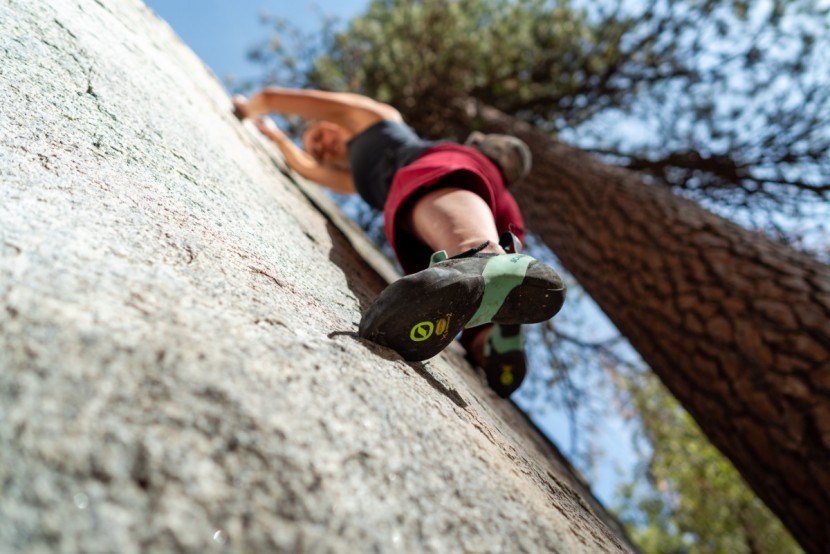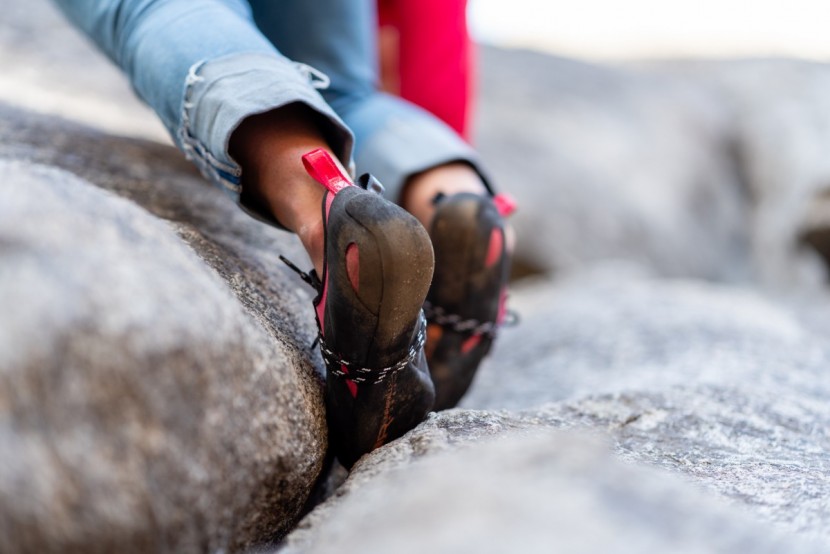To start this review off, we spent a lot of time researching the top models on the market. We chatted with other women at the crag to find out which shoes they were most excited about and why. Then we went climbing. We've broken our side-by-side comparison into five metrics and sought out the best style of climbing to test each one. After extensive testing, we have compiled the information here to let you know which models we think are the best for the discerning female climber.
Comfort
Comfort is both the easiest and most painful metric to test. We have to break in each pair of shoes just as we would a new pair at home. We go through the painful experience of squeezing our feet into aggressively downturned shoes and hobbling around the house until they start to feel normal. Some shoes break in easily, while others create hotspots.
Smearing
Slab climbing, in particular, is a great way to compare each shoe's performance in terms of smearing. In this discipline, we were able to test these shoes side-by-side because frequently, we are trying the same move over and over again. Focusing on minutiae in slab climbing provides a great opportunity to look critically at each pair of shoes' sensitivity. Foot placement and smears become the focal point for the entire climb when there is often no real foothold to stand or pull on. The shoes' rubber also plays an important role in smearing ability, and external factors like temperature can also impact performance.
Edging
To test each shoe's edging prowess, we sought out climbs on vertical terrain with edges for footholds rather than smears or pockets. Granite sport climbs and boulders, as well as the techy limestone faces of areas like Siurana, Spain, were great places to test a shoe's edging capabilities. Stiffer shoes tend to do better for this type of climbing than soft, downturned slipper-like shoes that excel on overhanging terrain.
Pulling
To test shoes' performance on pulling, we sought out pocketed limestone in areas like the endless cliffs of Bighorn Dolomite found in Tensleep, Wyoming. We also climbed in areas like the Verdon Gorge in Southern France, Lander, Wyoming, and Montsant, Spain – all locales known for steep climbing. Softer shoes with a narrow toe box and an aggressive, asymmetrical shape can fit in small pockets and allow us to pull into the wall with our feet. This is crucial when the terrain gets steeper and the climbing gets harder.
Crack Climbing
To test the shoes' performance on cracks, we returned to our roots as trad climbers. Our lead tester spends lots of time in Yosemite Valley, where crack climbing skills are constantly tested. We jammed each pair of shoes in finger cracks, hand cracks, off-widths, and everything in between. This burly style of climbing is also a great way to test shoes' durability and comfort.






